Removing failed rubberised coating from equipment.
One of my pet hates is the soft-touch rubberised coating some manufactures put on their kit. It invariably fails sooner or later. Indeed, I’ve had quite a lot of kit over the years where the rubberised coating has failed. Fortunately it is usually fixable – or to be more precise, removable. Depending on the coating’s formulation, and the substrate material, petrol and/or isopropanol and a little ‘elbow-grease’ will normally remove the sticky mess. Unfortunately, sometimes lettering and legends come off too.
Nevertheless, I have successfully removed failed rubberised coatings many times, even on some quite expensive kit, E.g. AOR 8200 wide band radio scanner, Sony ICF-SWT1000 multiband receiver/cassette-corder and my trusty Degen 1126 Radio/MP3 player/recorder. All of which work perfectly following their clean-up.
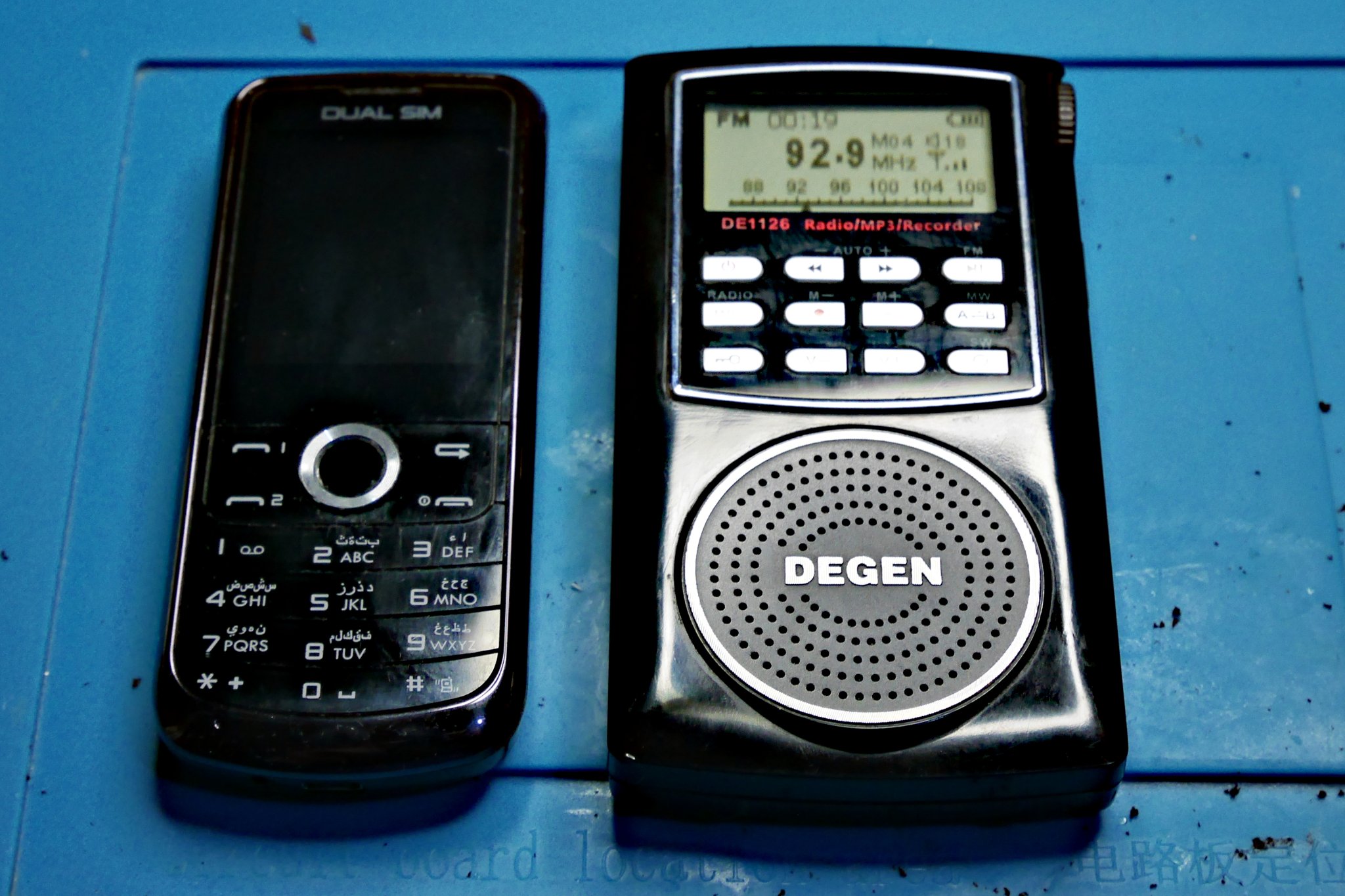
How to remove failed coating
Firstly you need to find a solvent that actually attacks the rubber gunge without damaging the plastic substrate. My favourite two solvents for this sort of repair are petrol (US: gasoline) and isopropanol. Important, try the solvent first on a small hard to see area. If that works and does not denature the underlying plastic, then…
- Dismantle the equipment as far as necessary and remove the works from the shell.
- Clean the sticky gunge off the shell using small amounts of isopropanol or petrol on clean pieces of white kitchen towel, or similar. A small plastic scraper can be useful in this context too.
- If you used petrol, then clean off any petroleum residue with isopropanol.
- Allow to dry, reassemble and test.
Mobile phone that turned into a sticky mess
As it happens, I had occasion to raid my box of old mobile phones this afternoon, looking for a working ‘BL5C’ battery. As I withdrew my hand, one of the old phones was literally stuck to my fingers. Its rubberised coating had completely broken-down, forming a nasty, sticky, treacle-like mess. So I took a few snaps of the recovery process…
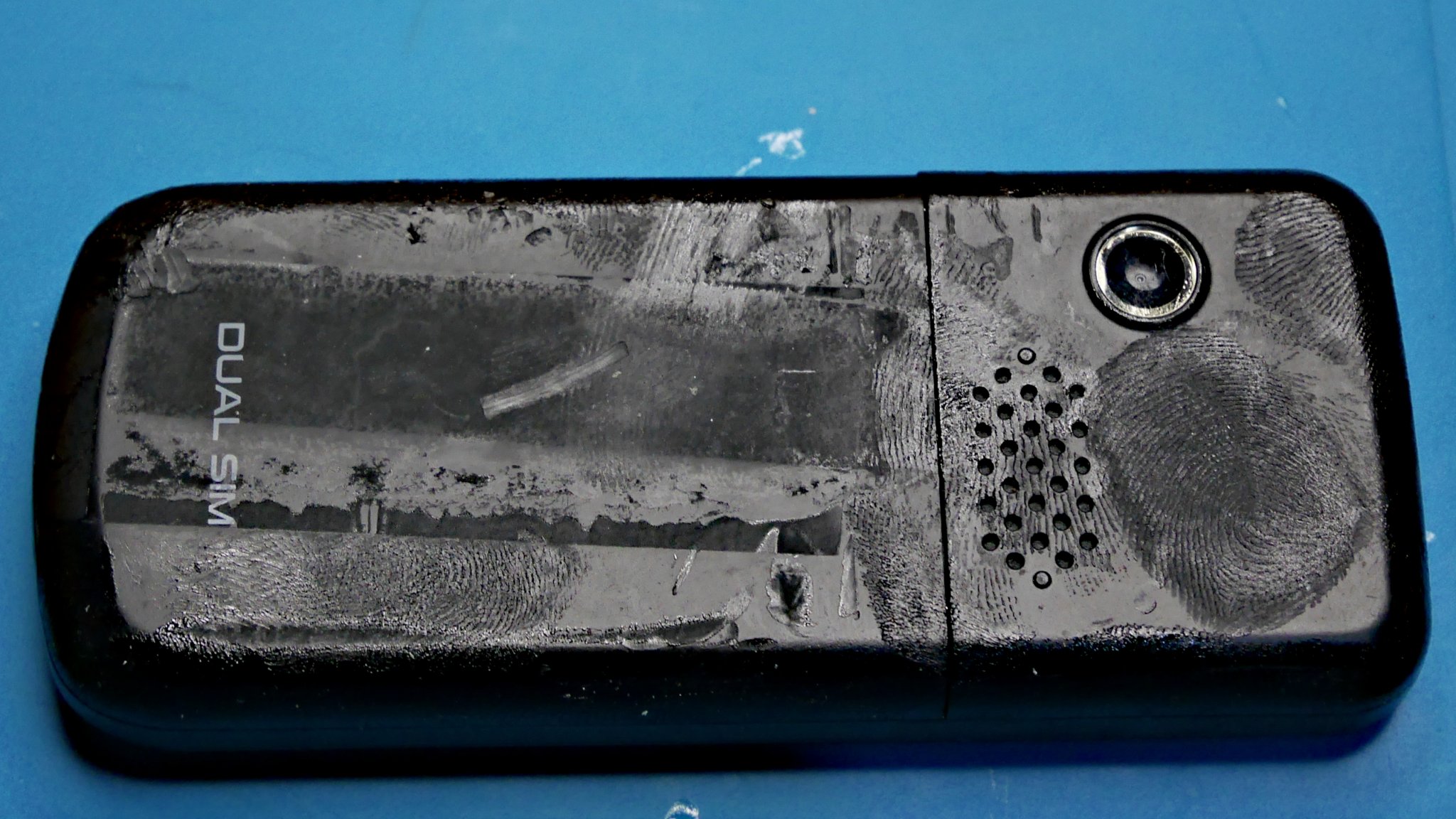
I don’t actually have any petrol – well only in the car. But sometimes isopropanol will remove this sticky on its own. So I tried it and it worked. Though it took several attempts to remove it all. I also used a standard mobile phone screen removal tool as a gentle scraper to remove the clumps of rubberised gunge.
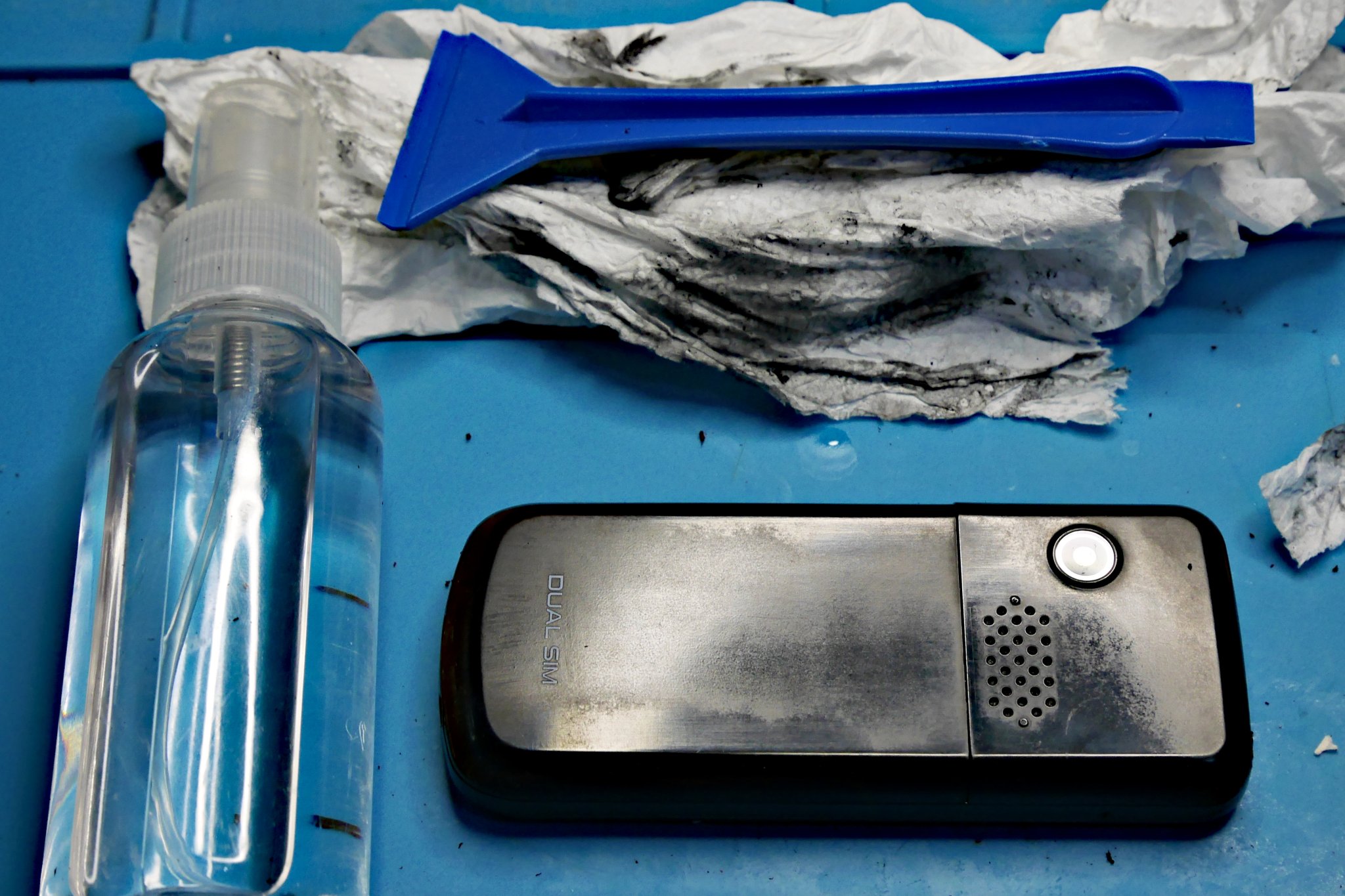
It took 5 sheets of Tesco kitchen paper, 30 millilitres of 99.9% isopropanol and around 20 minutes of ‘elbow-grease’, but eventually I removed it all. And the printed legends remained mostly in tact.
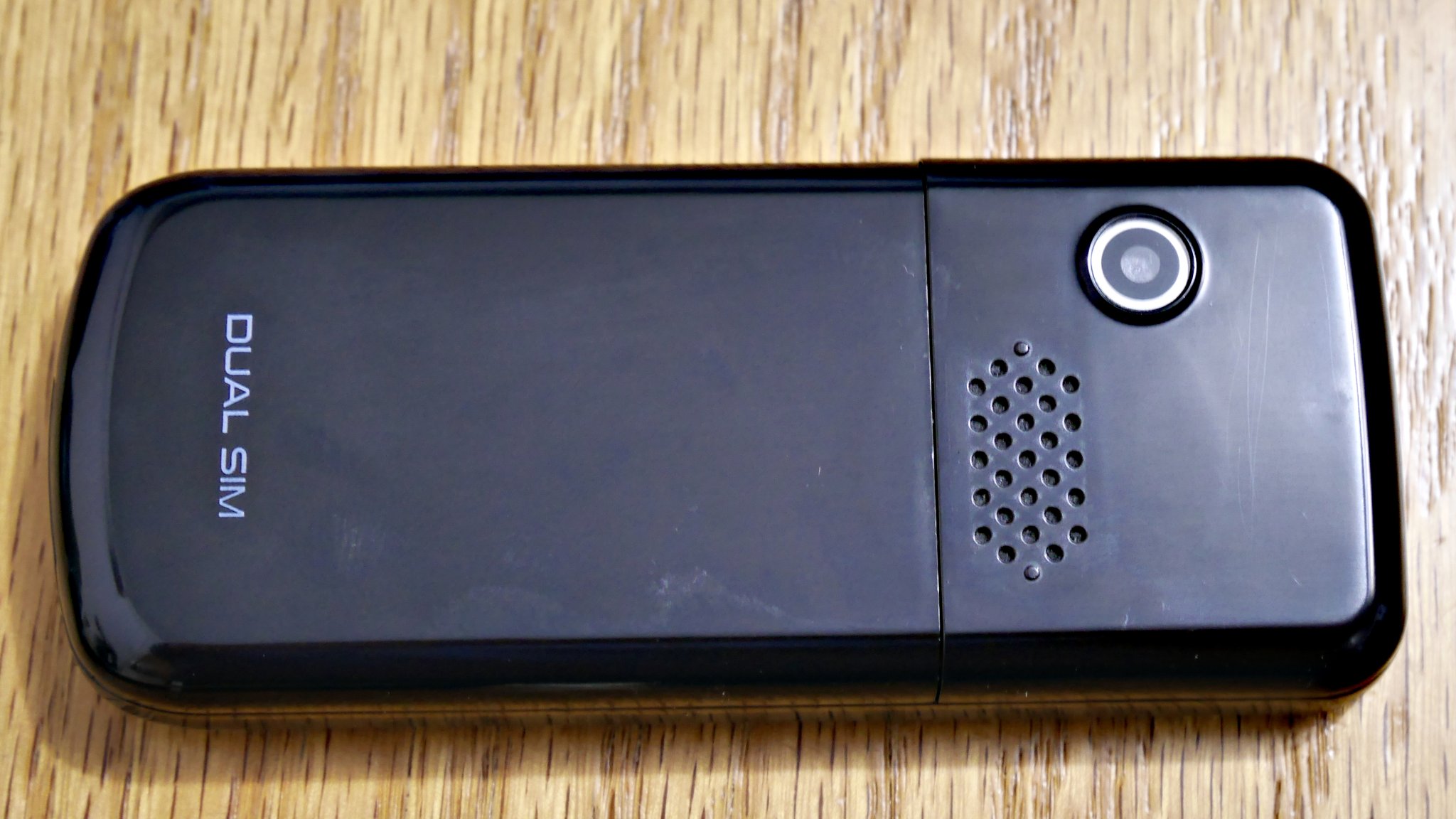
And even though I didn’t even bother to dismantle the device, it still worked…
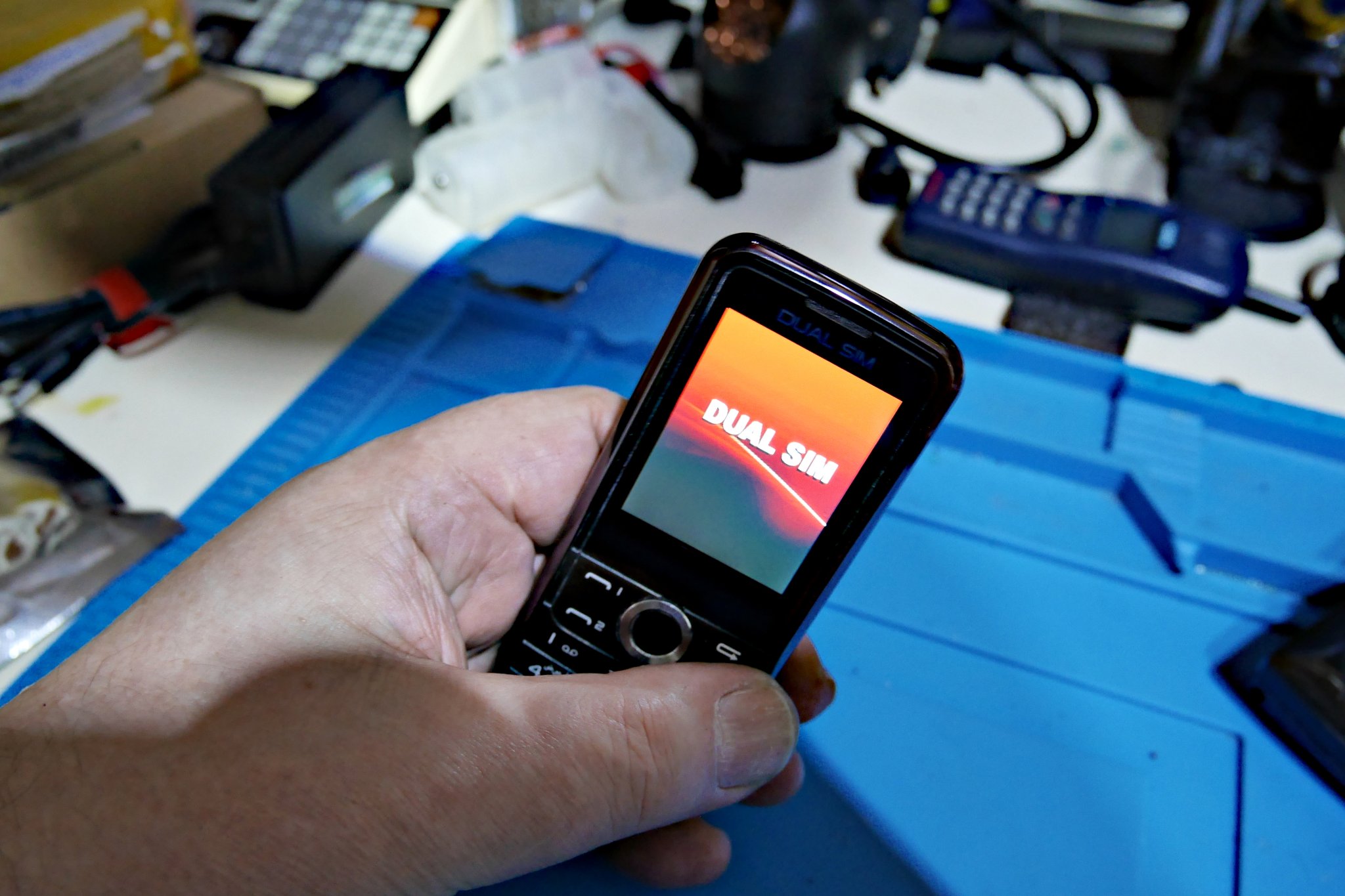

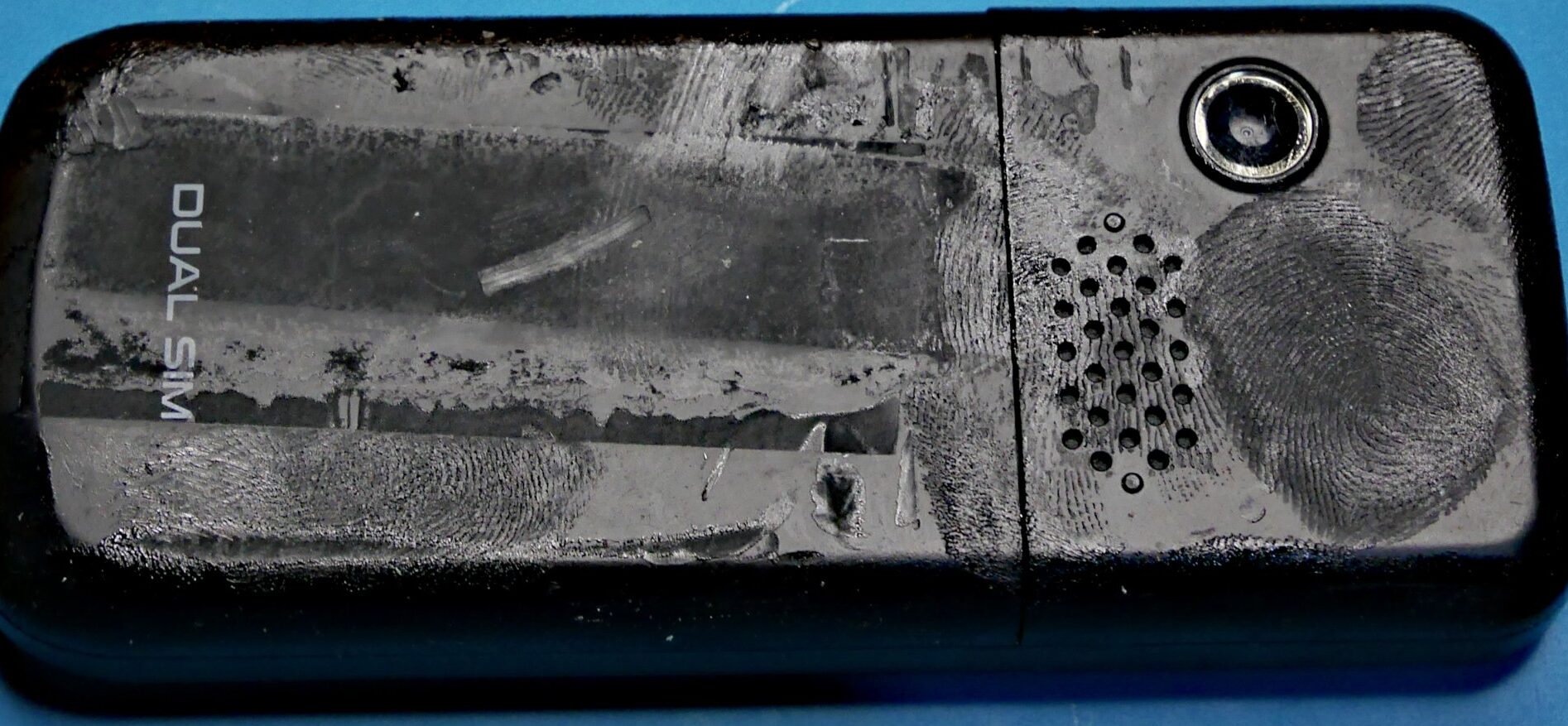
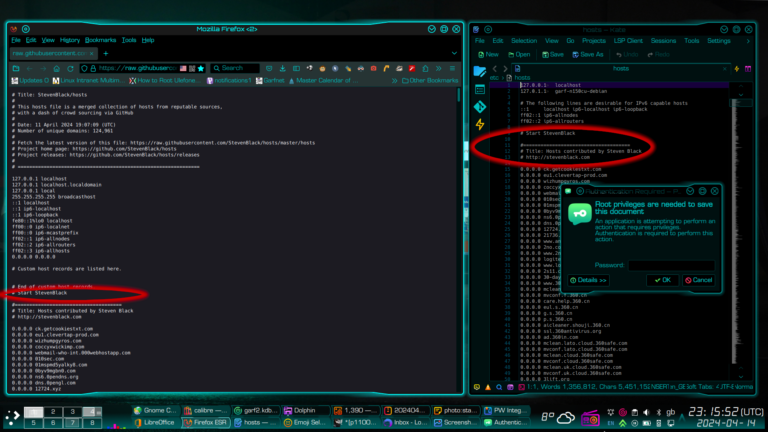
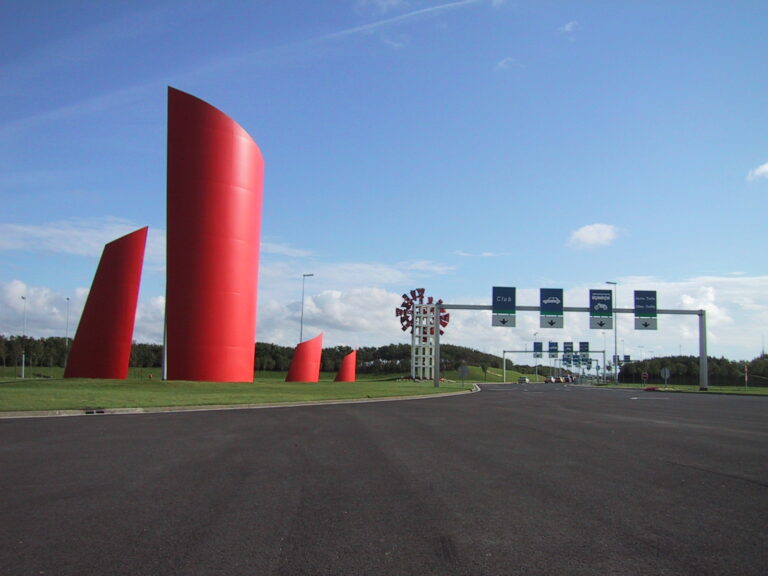
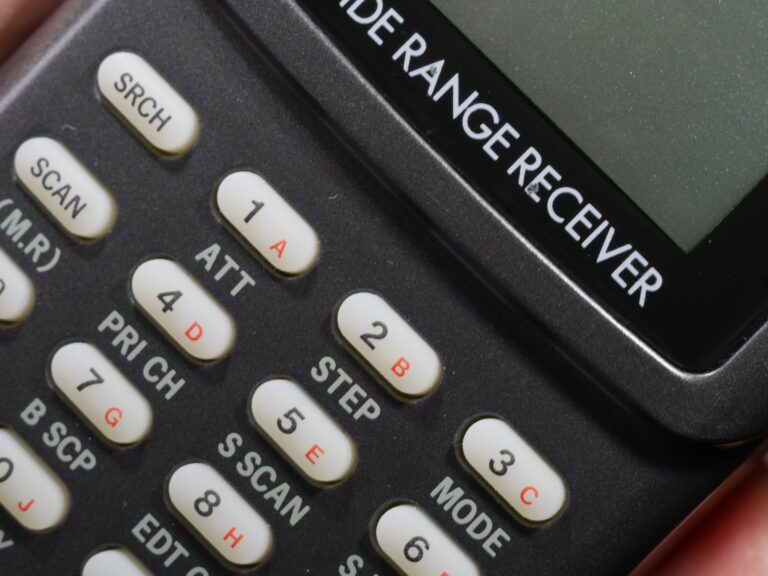
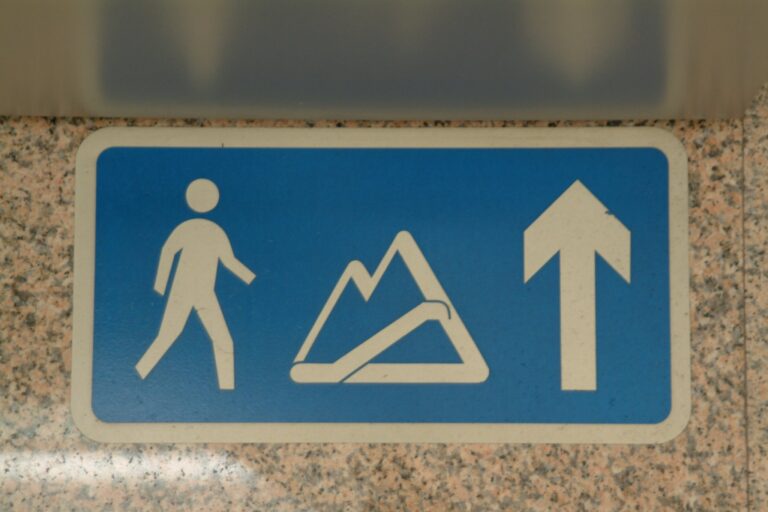


I have a spotting scope made by a company called ‘acuter’ which is coated with this rubber compound, which eventually degrades into a sticky mess rather like the coating on your mobile phone. The problem here is not being able to take the thing apart to clean it since it is filled with nitrogen gas rather than just air. Obviously it is much, much larger than your average mobile phone, necessitating in the need for about half a gallon of petrol and a whole roll (maybe more) of kitchen roll in order to remove the bulk of the degraded rubber.
Fortunately, at the time of purchasing the instrument, I bought a waterproof cover for the thing, which fits quite tightly and allows me to operate the zoom and focus mechanisms quite adequately without having to touch the body of the instrument. I have therefore only cleaned the areas where the focussing and zoom operating takes place. Had I not bought this cover I would have been left with the incredibly difficult task of trying to remove the messy stuff from the whole of the scope without damaging the mechanisms which allow it to work properly.
I was wondering how other people fared when given the same messy task?
I really don’t know what to suggest in your case, Michael. I think your approach of minimal gunge cleaning is probably the most appropriate here. The thing you need to avoid is damaging any of the seals.
And here I’ve been dusting them with corn starch like a chump. Thx.
I tried various powders over the years. At best they were only a temporary fix. To make this kit usable in the longer term, one really needs to remove the sticky coating altogether.